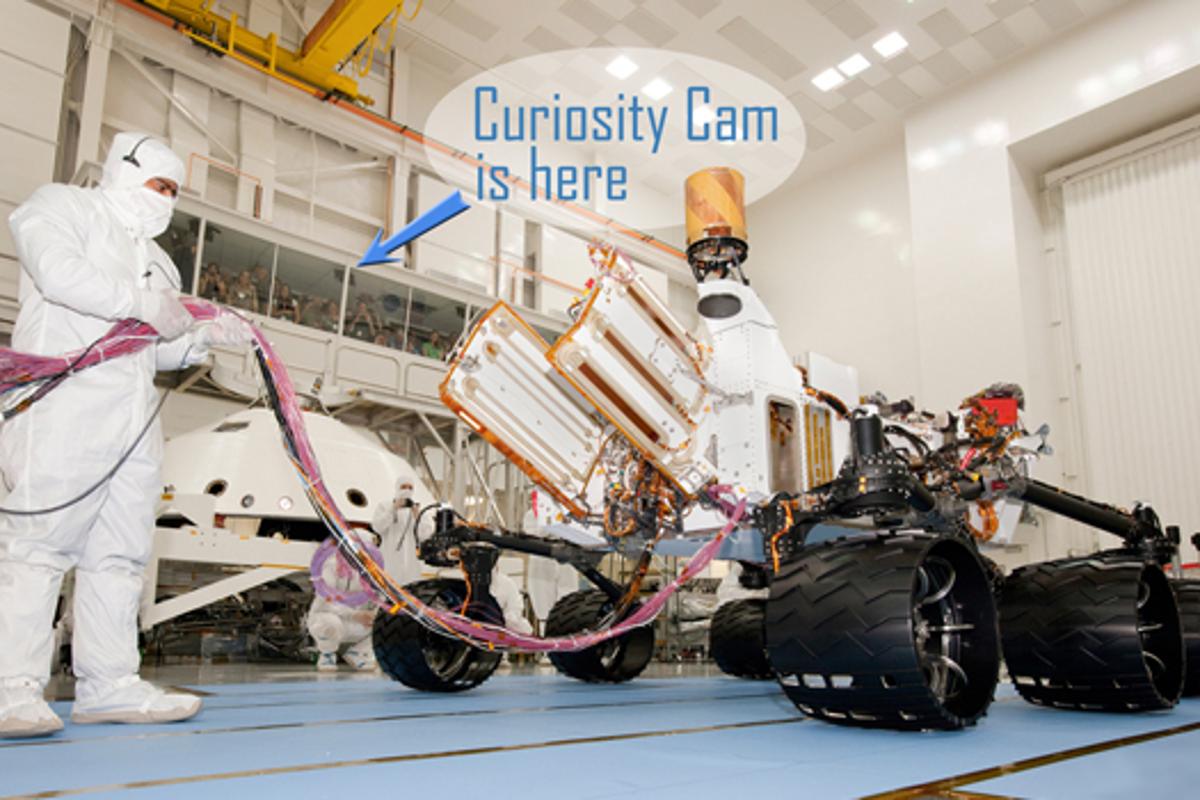Technicians from NASA's Jet Propulsion Laboratory have set up a live feed webcam inside the clean room of the Mars Science Laboratory in Pasadena, California. There's no audio but anyone can tune in and watch them put NASA's Curiosity Mars Rover together. On those rare occasions when nothing much is going on in the lab, the feed will be supplemented with interview footage from team members.
The affectionately-named the "Curiosity Cam" has been set up in the viewing gallery above the clean room floor to stream assembly footage from 8 a.m. PDT Monday through Friday. As I write, the team is scheduled to carefully lift the Curiosity Rover's 7-foot-long robotic arm into position at the front of the vehicle. Viewers have been previously treated to watching the assembly engineers and technicians adding new avionics and instrumentation, the assembly of the suspension system and the fitting of its six wheels.
Although the webcam is aimed at an area of the clean room that has been found to be most active, occasionally team members may move out of shot for extended periods or work could be taking place elsewhere in the lab. On such occasions, live feeds may be cut in favor of web chats with Curiosity team members answering questions about their role in one of NASA's "most technologically challenging interplanetary missions ever designed."
Curiosity has been engineered for long distance travel over rough terrain and will carry a scientific payload some ten times the mass of previous rovers. Its mission will be to "investigate whether the landing region has had environments favorable for supporting microbial life and for preserving evidence about whether life existed on the Red Planet."
The vehicle is scheduled to be transported to Florida's Kennedy Space Center in the spring of 2011, ahead of a launch planned for somewhere between November 25 and December 18. The vehicle will arrive on Mars in August 2012.
Those looking to watch the construction action should head over to the Ustream page or dedicated NASA and Jet Propulsion Laboratory portals.




